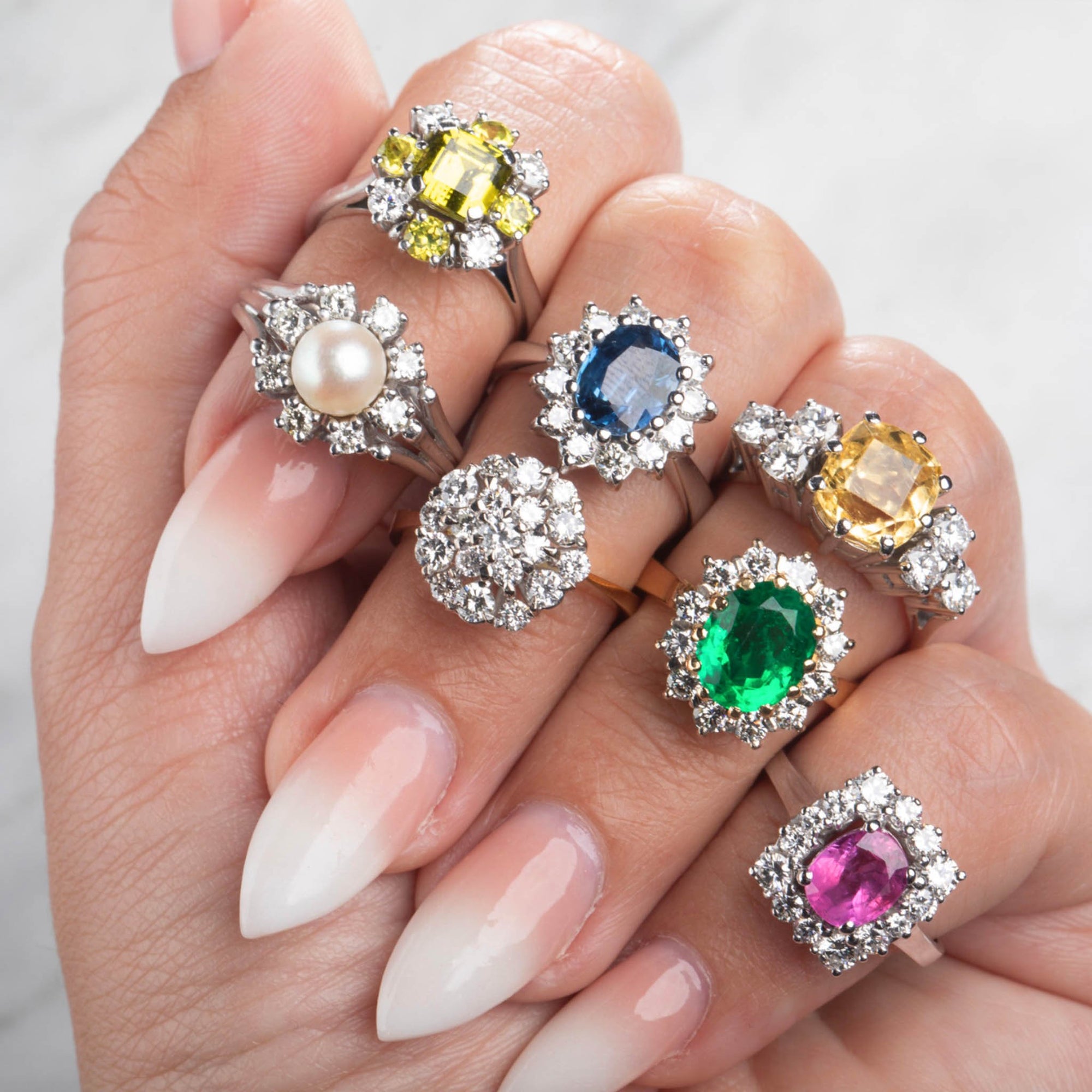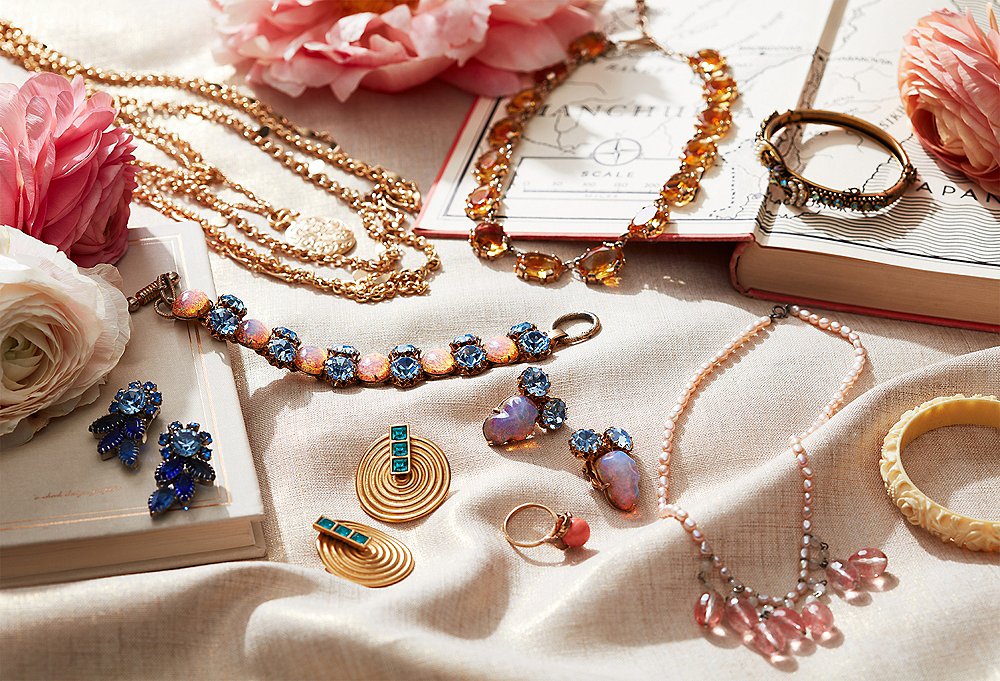Reveal the Rich Background Behind Stunning Estate Precious Jewelry Collections
The exploration of estate jewelry collections provides a distinct window right into history, revealing the intricate relationship between craftsmanship and cultural advancement (estate jewelry austin). Each piece is not merely a testament yet an accessory to the creative motions and societal values of its time, from the ornate information of the Victorian period to the structured beauty of the Mid-Century Modern. As we analyze these amazing artifacts, we uncover stories that go beyond generations, motivating us to take into consideration not just their beauty, yet the lives they have actually touched and the moments they have witnessed. What keys might these collections still hold?
The Beginnings of Estate Precious Jewelry
Just how did estate fashion jewelry concerned embody the abundant history and virtuosity of bygone eras? The beginnings of estate fashion jewelry can be mapped back to different periods of workmanship, where fashion jewelry was not merely an accessory but a reflection of social worths, technological developments, and artistic expressions. Each item narrates, typically associated with the lives of their previous owners, encapsulating personal stories alongside historic contexts.
The term "estate fashion jewelry" usually describes pre-owned pieces, usually from considerable ages such as Victorian, Art Nouveau, or Art Deco. These items were produced with thorough attention to detail, showcasing the ability of craftsmens who utilized products like gold, silver, and precious gemstones. Unlike contemporary precious jewelry, estate items frequently feature one-of-a-kind designs that highlight the appearances of their time, thus working as concrete web links to the past.

Notable Style Ages
Throughout history, a number of noteworthy design periods have actually dramatically affected the development of estate jewelry, each characterized by distinctive designs, materials, and cultural contexts. The Georgian period (1714-1837) noted the beginning of complex designs, commonly including nature-inspired concepts and using materials like gold, silver, and gems embeded in fancy settings. Following this, the Victorian age (1837-1901) introduced romantic styles, with sentimental precious jewelry and ingenious techniques such as the usage of enamel and cameos.
The Art Nouveau duration (1890-1910) commemorated organic kinds and the charm of nature, utilizing products like opals and pearls in flowing layouts. This was been successful by the Art Deco era (1920-1939), which welcomed geometric patterns, strong colors, and lavish materials such as platinum and rubies, showing the modernist spirit of the moment.
The Mid-Century Modern age (1940-1960) showcased streamlined styles and using unusual materials, stressing minimalism and functionality. Each of these periods not only mirrors the artistic activities of their time but likewise encapsulates the societal worths and technological improvements that shaped precious jewelry design, making them an interesting topic for historians and collection agencies alike.

Famous Estate Jewelry Collections
The rich background of estate precious jewelry is wonderfully exhibited by a number of distinguished collections that showcase the creativity and workmanship from numerous design ages. One of the most renowned is the Cartier Collection, which reflects the luxury and development of the famous French jewelry expert. Parts from this collection frequently feature complex designs and splendid gems, highlighting the brand's commitment to fine workmanship.
Another significant collection is the Lady of Windsor's precious jewelry collection, which consists of numerous distinct items, consisting of the famous "Windsor" arm band. This collection not just exhibits the sophistication of the Art Deco duration however likewise brings a rich narrative of love and loss, as it came from Wallis Simpson, that notoriously wed Edward VIII.
The collection of the late starlet Elizabeth Taylor likewise sticks out in the realm of estate fashion jewelry. With numerous pieces designed by prominent jewelry experts like Bulgari and Cartier, her collection symbolizes beauty and elegance, underscoring her individual design and fondness for distinct gemstones.
These famous estate precious jewelry collections function as a testament to the enduring attraction of great precious jewelry, supplying understanding into the creative and cultural activities that formed their development.
The Cultural Value
Estate precious jewelry collections hold profound social relevance, showing not just the visual values of their respective periods anonymous however also the explanation historical and social contexts in which they were developed. Each item frequently embodies the workmanship and creative fads of its time, showcasing the development of design and modern technology in fashion jewelry production.
Additionally, these collections act as substantial links to social customs and routines. As an example, wedding celebration bands and treasure breastpins may signify love and domestic bonds, while pieces decorated with certain gems can represent cultural or regional identities. The products made use of-- whether gold, silver, or gemstones-- commonly inform stories of trade, expedition, and the wealth build-up of cultures.
In addition, estate fashion jewelry can function as historical artifacts, supplying understandings into the lives of individuals and the societal standards they navigated. The method precious jewelry was put on and valued can reveal much regarding gender functions, standing, and individual expression within varying social landscapes. Estate precious jewelry goes beyond plain ornamentation, acting as a rich narrative of human experience, creativity, and cultural heritage, inviting contemporary audiences to engage with the past in a meaningful way.
Caring for Your Estate Parts
Caring for estate fashion jewelry pieces calls for a thoughtful technique to ensure their longevity and preserve their unique characteristics. Constantly clean estate jewelry making use of a soft, lint-free fabric after each wear to remove oils and dust.
Storage is similarly essential; shop items separately in a fabric-lined box to prevent entangling and scraping. Consider making use of anti-tarnish pouches or cloths for silver products, as this assists to reduce the tarnishing procedure. Furthermore, avoid revealing fashion jewelry to excessive wetness, extreme temperature levels, or direct sunshine, which can negatively affect gems and metals.
Routine evaluations are crucial. Inspect for loose stones, used holds, or damaged setups, and seek expert fixings when needed. Consulting a jewelry expert experienced in vintage or antique pieces can give specialized treatment options. By carrying out these techniques, collection agencies can maintain their estate jewelry's historical and visual worth, ensuring these pieces remain to be valued for generations to come.
Conclusion
Finally, the expedition of estate precious jewelry collections discloses a tapestry of artistic expression and cultural relevance, showing the worths and aesthetics of various historical periods. As soon as possessed them, each item offers as a testimony to exceptional craftsmanship and the narratives of those that. Recognizing the beginnings, layout periods, and remarkable collections boosts admiration for these artifacts, emphasizing their duty in preserving cultural heritage and motivating ongoing stewardship and look after these impressive prizes.
The expedition of estate precious jewelry collections supplies an one-of-a-kind home window right into history, revealing the intricate connection in between craftsmanship and cultural advancement. The beginnings of estate fashion jewelry can be traced back to various durations of craftsmanship, where fashion jewelry was not simply an accessory yet a representation of societal worths, technical developments, and artistic expressions.The term "estate my latest blog post precious jewelry" typically refers to previously owned items, commonly from considerable eras such as Victorian, Art Nouveau, or Art Deco.The abundant history of estate jewelry is magnificently exemplified by a number of popular collections that display the creativity and craftsmanship from numerous design periods.In final thought, the expedition of estate fashion jewelry collections reveals a tapestry of imaginative expression and cultural significance, showing the values and appearances of different historic periods.